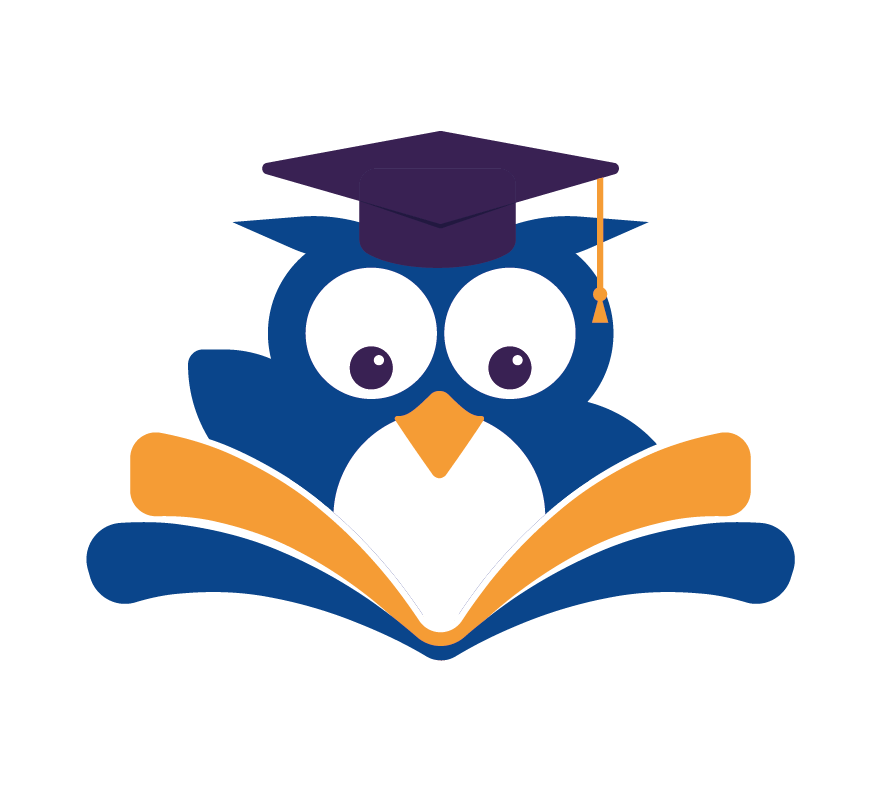Ever wondered why some people soak up info like sponges, while others find it hard to remember even simple things? The answer is intentional learning. By learning in a focused and organized way, you can change how you study and remember things.
Anders Ericsson, a leading expert, says deliberate practice is crucial for becoming an expert. This idea is about learn deliberately, pushing yourself to learn more than you think you can.
By making learning a part of your daily life, you can improve your learning. It’s time to move beyond just going through the motions and start making real progress.
Key Takeaways
- Deliberate learning is a focused and structured approach to studying.
- Intentional learning can transform your study habits and boost knowledge retention.
- Deliberate practice is key to achieving exceptional skill levels.
- By adopting a deliberate learning approach, you can take your learning to the next level.
- Deliberate learning helps you make real progress and achieve mastery.
What Is Deliberate Learning and Why It Matters
Deliberate learning is more than a method; it’s a way of thinking that changes how we learn. In today’s fast world, knowing about deliberate learning can really help.
The Science Behind Intentional Knowledge Acquisition
Ericsson’s research shows that deliberate practice is not just about doing something over and over. It’s about getting better with a plan and feedback. This means focusing on certain skills, getting feedback, and changing how you learn.
Using this purposeful education method, you can learn faster. You can get past learning blocks and become an expert sooner.
Differentiating Deliberate Learning from Passive Learning
Deliberate learning is different from just sitting back and listening. It makes you actively participate and challenge yourself. This makes it a better effective learning strategy in the long run.
For example, reading a book casually is different from really remembering key points through mindful study techniques. The second way helps you understand and remember better.
Knowing the science of deliberate learning and how it differs from passive learning helps us use it to reach our goals.
The Cognitive Science of How We Learn Deliberately
Exploring the science behind deliberate learning reveals how our brains absorb new info. This method uses our brain’s ability to change and grow through focused effort. It’s all about how our brains process info, key for improving our thinking skills.
Understanding Memory Formation
Learning new things involves several steps: encoding, consolidation, and retrieval. Encoding is when we first take in info. Our focus and how we process it matter a lot.
Here’s a simple table to show how memory forms:
| Stage | Description | Factors Influencing Success |
|---|---|---|
| Encoding | Initial intake of information | Attention, processing strategies |
| Consolidation | Storing information in long-term memory | Repetition, spaced repetition |
| Retrieval | Accessing stored information | Practice, context cues |
The Role of Attention in Learning
Attention is crucial for learning. Focusing on what we’re learning helps us remember better. Tools like the Pomodoro Technique help by giving us breaks and reducing stress.
Neuroplasticity and Deliberate Practice
Our brains can change and adapt with experience. Deliberate practice, which is focused and structured, boosts this ability. It helps us improve our skills by rewiring our brains.
To get the most from deliberate practice, we need to understand neuroplasticity. Knowing how it works helps us learn better and faster.
Assessing Your Current Learning Habits
Before you can get better at learning, you must examine your study habits closely. It’s important to see what works and what doesn’t. This way, you can make smart choices about how to learn.
Identifying Ineffective Study Patterns
We’ve all used study methods that don’t work for us. Spotting these patterns is the first step to change.
Common Learning Pitfalls to Avoid
Some common mistakes include:
- Procrastination: Delaying study until the last minute.
- Distractions: Studying in places with too many distractions.
- Lack of organization: Not keeping study materials and schedules organized.
Knowing these pitfalls helps you steer clear of them.
Self-Assessment Tools
To check your learning habits, use self-assessment tools. These might include:
- Learning journals: Writing about your study experiences and thoughts.
- Quizzes and tests: Regularly checking your knowledge to find areas to improve.
- Study planners: Organizing your study schedule to stay on track.
Recognizing Learning Strengths and Weaknesses
Knowing your strengths and weaknesses is key for deliberate practice and growth mindset training. By recognizing where you excel and where you need work, you can tailor your study approach. This helps you learn more effectively.
Take time to reflect on your learning experiences. Don’t hesitate to adjust your strategies as needed.
Designing Your Deliberate Learning Environment
The space where you learn can either hinder or enhance your ability to absorb new information. As we explore the concept of deliberate learning, it’s crucial to understand that the environment in which you learn plays a significant role in determining the effectiveness of your efforts.
Creating Physical Spaces That Enhance Focus
Creating a physical space that enhances focus involves more than just clearing a cluttered desk. It requires designing an environment that promotes concentration and minimizes distractions. Consider the following elements when setting up your learning space:
- Ergonomic Furniture: Invest in a comfortable chair and a desk that allows you to maintain good posture.
- Adequate Lighting: Ensure the space is well-lit, preferably with natural light, to reduce eye strain.
- Minimal Distractions: Keep the area clutter-free and away from high-traffic zones.
Digital Environment Optimization
In today’s digital age, optimizing your digital environment is just as important as your physical space. This involves managing digital distractions and leveraging technology to enhance your learning experience.
Managing Digital Distractions
Digital distractions can significantly impede your learning progress. To manage these distractions:
- Use website blockers like Freedom or Cold Turkey to limit access to non-essential sites.
- Turn off notifications on your devices or put them on “Do Not Disturb” mode.
- Schedule specific times to check emails and social media.
Effective Learning Apps and Tools
There are numerous apps and tools designed to enhance your learning experience. Some popular options include:
| Tool | Description |
|---|---|
| Evernote | Note-taking and organization |
| Quizlet | Flashcards and learning games |
| Forest | Productivity and focus enhancement |
“The way we learn is changing, and technology is at the forefront of this change, providing innovative tools to enhance our learning experience.”
Time Management for Maximum Learning Efficiency
Effective time management is crucial for maximizing learning efficiency. Techniques such as the Pomodoro Technique, where you work in focused 25-minute increments followed by a 5-minute break, can significantly enhance your productivity.
By optimizing both your physical and digital environments and employing effective time management strategies, you can create a deliberate learning environment that fosters focus, productivity, and ultimately, success in your learning endeavors.
Effective Strategies to Learn Deliberately
Let’s explore strategies that can change how you learn. To learn on purpose, you must be careful about how you study. This means using methods that help you remember, understand, and use what you learn.
Spaced Repetition Techniques
Spaced repetition is a great way to learn. It involves reviewing material at longer intervals to make it stick in your memory. This method uses the psychological spacing effect, showing that spaced learning is better than cramming.
To use spaced repetition, try flashcards or apps. For example, review a concept one day, then a week later, and after a month. This strengthens your memory and helps you recall information when needed.
Active Recall Methods
Active recall means actively recalling information instead of just reading it. You can quiz yourself, summarize in your own words, or teach it to someone else.
Practice quizzes or tests are great for active recall. They help you see where you need to focus and improve your recall under pressure. Active recall is a strong learning strategy that boosts retention and understanding.
Interleaving Different Subjects
Interleaving means switching between different material or problems. It deepens your understanding and improves application. This technique helps you see the underlying principles across different subjects.
For example, if studying math concepts, mix up your practice. This makes studying more challenging but more effective in the long run.
Elaborative Interrogation
Elaborative interrogation involves asking yourself questions about the material and answering them. It helps you deepen your understanding by making you think critically about the information.
By using elaborative interrogation, you gain a deeper understanding of the subject. It’s a simple yet powerful method that works well with other strategies like spaced repetition and active recall.
Mindful Study Techniques to Enhance Retention
Exploring mindful study techniques can boost your learning and make it more fun. Mindfulness helps you stay present and focused. This can greatly improve how well you remember what you learn.
The Pomodoro Technique for Focused Learning
The Pomodoro Technique is a simple yet effective way to study. It involves working in 25-minute focused sessions, followed by a 5-minute break. This method keeps you on track and prevents burnout by giving you breaks to refresh.
To use the Pomodoro Technique, pick a task and set a 25-minute timer. Work without distractions during this time. When the timer ends, take a 5-minute break before starting another 25-minute session. You can adjust the time to fit your needs.

Mindfulness Practices During Study Sessions
Mindfulness practices can keep you calm and focused while studying. Start by taking a few deep breaths before you begin. This helps calm your mind and focus on the present.
Try adding mindfulness exercises to your study routine. Body scan meditation or mindful walking can improve your concentration and awareness.
Visualization Methods for Complex Concepts
Visualization is a great way to learn complex ideas. Creating mental images of what you’re learning helps solidify it in your memory. This makes it easier to remember later.
To visualize effectively, create vivid mental images linked to the information you’re learning. For example, imagine yourself in a historical event. The more detailed and engaging your visualizations, the better they’ll help you remember.
By using these mindful study techniques regularly, you can improve your memory, stay focused, and reach your learning goals. Remember, it’s important to be consistent and patient as you develop these new habits.
Developing a Growth Mindset for Continuous Improvement
Having a growth mindset is key to turning challenges into chances. It means believing you can grow your skills with hard work and dedication. This mindset helps you face challenges, keep going when things get tough, and see failures as steps to success.
Embracing Challenges as Learning Opportunities
When faced with a tough task, do you run away or see it as a chance to grow? Embracing challenges is a sign of a growth mindset. It’s about seeing every challenge as a chance to learn and get better. This way, you can change how you learn and grow.
Here are some ways to embrace challenges:
- Reframe your thinking: See challenges as chances to grow, not threats to your ego.
- Break it down: Make big tasks smaller to build confidence and keep moving.
- Seek feedback: Ask for feedback to find areas to improve.
Reframing Failures as Feedback
Failures are part of learning. But how you react to them matters. Instead of seeing failures as setbacks, view them as feedback to guide you. This mindset helps you learn from mistakes and move forward with purpose.
To see failures as feedback:
- Analyze what went wrong: Find out what led to the failure.
- Adjust your approach: Use what you learned to change your strategy.
- Keep moving forward: Use the lessons from your failures for the next challenge.
Setting Progressive Learning Goals
Setting goals is important for learning. Progressive learning goals help you keep improving and stay motivated. Make sure your goals are specific, measurable, achievable, relevant, and time-bound (SMART) for success.
To set effective learning goals:
- Identify your objectives: Clearly state what you want to achieve.
- Create an action plan: Outline the steps to reach your goals.
- Monitor your progress: Check your progress often and adjust your plan if needed.
By facing challenges, seeing failures as lessons, and setting goals, you can grow your mindset. This mindset is essential for ongoing improvement and effective learning. It helps you reach your full potential and succeed in your learning journey.
Measuring Progress in Your Deliberate Learning Journey
Starting your deliberate learning journey means tracking your progress. It’s important to see how far you’ve come and what you still need to work on. This helps keep you motivated and lets you tweak your learning plan as needed.
Tracking Knowledge Acquisition
It’s key to track what you’ve learned. It’s not just about gathering knowledge. It’s about seeing how your knowledge grows and where to focus next.
Digital Tracking Systems
Digital tools are great for tracking your learning. Apps like Notion or Evernote help you organize your notes and track your progress. You can also use digital spreadsheets to log what you’ve learned and when.
- Create a database of your learning materials
- Set milestones for achieving certain levels of knowledge
- Use tags or categories to quickly find specific information
Analog Methods for Progress Monitoring
Analog methods can be just as good as digital tools. Keeping a learning journal helps you reflect on your progress. Writing down what you’ve learned and how you overcame challenges offers valuable insights.
![]()
Evaluating Skill Development
Learning new things is important, but so is developing skills. You need to see how well you can use what you’ve learned.
Set up regular practice sessions to apply your new skills. For example, if you’re learning a new language, practice speaking or writing. If you’re learning a musical instrument, practice every day.
Adjusting Strategies Based on Results
After tracking your progress and evaluating your skills, it’s time to adjust your strategies. This is where deliberate learning really shines.
Look at your results, find out where you’re struggling, and change your approach. You might need to switch your study environment or add more practice sessions. The key is to be flexible and adapt to your progress.
- Review your progress regularly
- Identify what’s working and what’s not
- Make adjustments to your learning strategy as needed
Conclusion: Transforming Your Life Through Deliberate Learning
Learn deliberately is more than a technique. It’s a mindset shift that can change your life. By using intentional learning strategies, you unlock your full potential.
The path to effective learning isn’t just about gathering info. It’s about gaining a deeper understanding of the world. With effective learning strategies, you face challenges with confidence and curiosity.
Starting your deliberate learning journey means you’re getting closer to your goals. You’re not just learning; you’re growing, adapting, and evolving. The power to change your life through deliberate learning is yours.
So, take the first step today. Apply the strategies and techniques we’ve talked about. Embrace the process, and see how learn deliberately sparks personal and professional growth.

